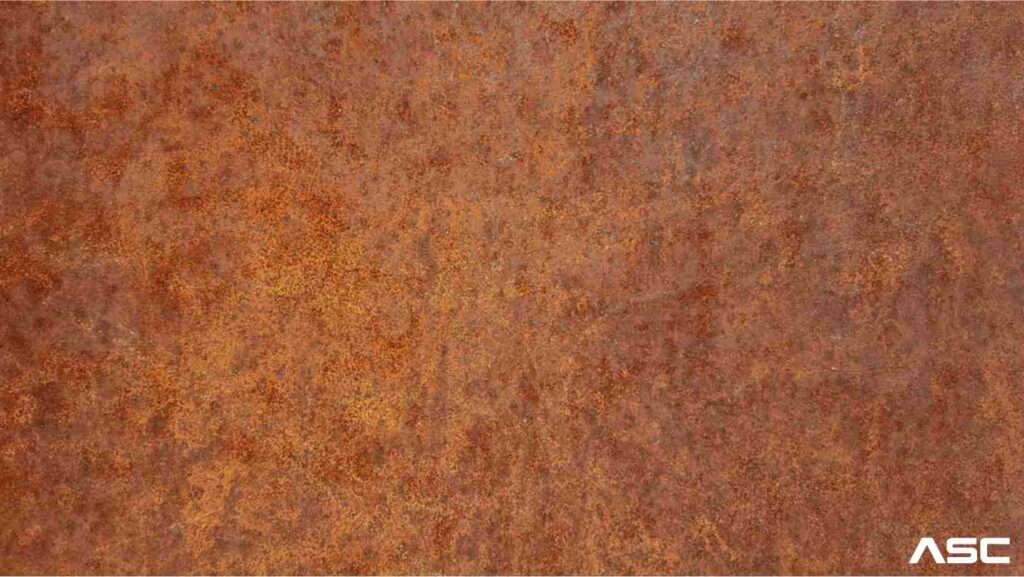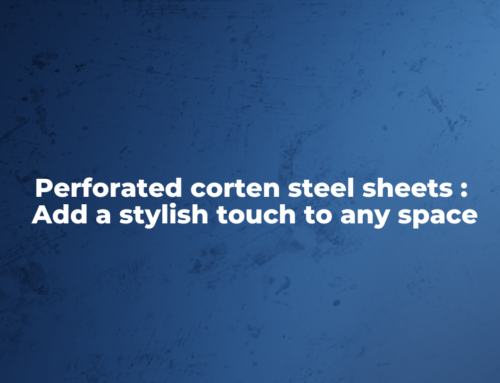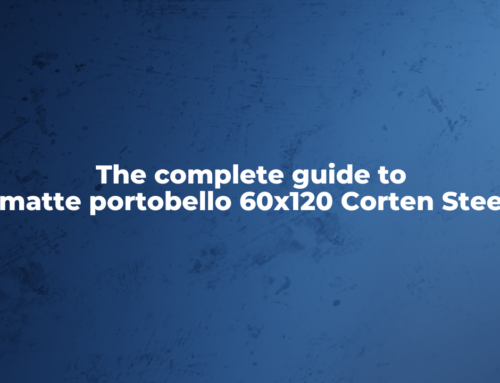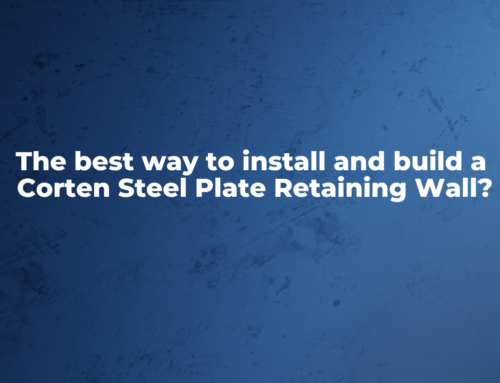How long does it take for the corten steel patina weathering process?
Corten steel is atmospheric corrosion-resistant steel. Low alloy content and between normal carbon steel and stainless steel. So core 10 steel sheets is carbon steel that is alloyed with copper (low Cu) and chrome (low Cr). These elements provide anti-corrosion properties. Furthermore, it has advantages such as high strength, plastic ductility, easy to profile, welding and cutting, corrosion resistance, high-temperature resistance, fatigue resistance;
The impressive part is that corten steel is anti-corrosion resistant and has a paintability that is 1.5 to 10 times greater than common carbon steel. As a result, steel parts made from weathering steel have good resistance to rust, longer durability, and lower costs. As a result, most of the material was saved.

Why use weathering steel?
A new metallurgy method, advanced technology, and processes have been incorporated into this steel. At the international level, weathering steel (corten steel) is a super steel material. Due to its remarkable corrosion resistance, weathering steel has become the most popular material for outdoor decorations and buildings.
Whether you are undertaking an architectural or landscaping project, you might have access to tons of building materials. There are definitely pros and cons to each of them, but you would want something that would stand the test of time. Spending so much money on building something would be pointless if the material wasn’t durable.
Core 10 steel sheets is also known as weathering steel. This type of steel is a trademark The thing with building materials is that you would often find a layer of rust to form over them during the course of time. No matter how much you would try to prevent it, it would definitely creep in.
That is why the United States Steel Corporation This type of steel is a trademark be able to prevent that layer of dust from being formed. Not only that, but it would also eliminate the steel from deteriorating more. As a result, you would not have to worry about getting it painted from time to time.
In other words, while all this might seem too good to be true, you must also look at it from a realistic perspective. While the rust would continue to grow thicker, the steel would become thicker without becoming stabilized. When the steel reaches its breaking point, it becomes perforated and needs to be replaced. When selecting this steel, you should keep the difference in environmental conditions in mind.
How does corten weathering steel work?
All or most low alloy steels will rust if air and moisture are present. This would depend on the amount of moisture, oxygen, and atmospheric contaminants that would hit the surface. In the process, the rust layer would form a barrier that would prevent contaminants, moisture, and oxygen from passing through. In addition, this would delay the rusting process to some extent. The rusted layer would also separate from the core 10 sheet metal over time. This would be a cycle that would repeat itself over and over.
When it comes to weathering steel, things work a little differently. While the rusting process would definitely start off in the same way, it would progress in a slightly different manner. The alloying elements in the core 10 sheet metal would produce a rust layer that would be stable and adhere to the base metal. As a result, moisture, oxygen, and pollutants would not be able to penetrate further. You would therefore experience a much lower corrosion rate than you would with ordinary structural steel.
Corten Steel (Weathering steel) Applications
Weathering steel is mostly used in railway buildings, auto-mobile buildings, bridge buildings, tower buildings, photovoltaic power stations, and highway buildings. Containers, oil and gas, seaport construction and drilling rigs, and vessel parts containing H2S also use it.
ASTM A 242
The original A 242 alloy would have yielded a tensile strength of
The thickest rolled plates and sections would have an ultimate strength of 63 ksi and a yield strength of 42 ksi.
Types 1 and 2 are the categories in which you can find them. Based on their thickness, both materials would be used for different applications. Type 1 is normally used in the construction industry, housing structures, and freight cars. Type 2 steel, also called Corten B, is mostly used in passenger cranes or ships, and in urban furnishings.
ASTM A 588
This kind of weathered steel has an ultimate tensile strength of 70 ksi and a yield strength of at least 50 ksi. The thickness of the plate would be up to 4 inches. For plates with a diameter of at least 4 to 5 inches, the ultimate tensile strength is at least 67 ksi. 63 ksi would be the ultimate tensile strength for plates between 5 and 8 inches, and 42 ksi would be the ultimate yield strength.
Typical uses of corten steel
Corten steel is widely used in a variety of industries and projects, so what are some famous corten steel projects? To give you a better understanding of this steel, we have listed a few examples below.
Outdoor usages
In fact, weathering steel is most commonly used for outdoor sculptures. The Barclays Center in Brooklyn, New York, and Leeds Metropolitan University’s Humanities and Arts Complex are two primary examples. Other famous corten steel sculptures include:
Corten steel advantages
A look at some of the benefits of this type of steel makes complete sense. For more information, continue reading below:
Low maintenance
As far as maintenance is concerned, periodic inspections and cleaning would be the only things required for weathering steel that has been exposed. Periodic cleaning includes rinsing rusted surfaces with water to remove any contaminates or natural debris. The oxide structure would also benefit from dings and scratches since it would heal through its own natural development without requiring replacement.
Long-term performance and cost savings
Considering this is a long-term investment, you need to consider the savings that you would enjoy. If there would be no scope for savings, then using corten steel for construction projects would be pointless.
Since corten steel is durable, you can enjoy long-term cost savings. By looking at the buildings that were built almost fifty years ago, it is easy to realize this. Due to its durability and long-term cost savings, this is widely used throughout the world. It would also eliminate the expensive costs associated with painting by utilizing the protective and living nature of this material. Furthermore, by doing paint maintenance on site, whole life costs can also be reduced. Where maintenance of furniture would be difficult or dangerous, or where traffic disruption would need to be minimized, weathering steel would seem a good option.
Environmental benefits
In addition to saving money, protecting the environment would also be important. As well as exceeding LEEDS requirements and being 100% recyclable, you would be making a huge contribution to the environment. You can find a whole range of information on the internet by browsing a bit through it.
Dynamic texture and appearance
The appearance of buildings will be enhanced by weathering aged steel. The patina would undergo multiple transformations throughout the day, going from wet to dry and back again. A sense of wonder and depth would also accompany this. This steel would become much more than you expected. A subtle appearance would be revealed hidden behind exposed surfaces, waiting to be discovered and experienced in a new way. This level of complexity and sophistication can be found in very few building materials. The patina would continue to improve and blend with age as it had a variegated character and rich tones. Further development of the oxide layer would reveal earthier tones.
Minimizing lead time and cost
The best way to get the minimal cost and most streamlined application is to use raw corten steel. As a result, both lead times and costs associated with cladding materials would be reduced. When you first apply this steel, you will notice a flash of rust that will settle. Since it would run off and bleed onto adjoining surfaces, you wouldn’t have to worry about that. The design could include a catch system or gutter if you wish to handle this. Loose ferrites could be transferred or hidden in this way.
Limitations of weathering steel (corten steel)
Like any other building material, weathering steel also has its limitations. However, this should not come as a surprise. It would be good if you learned more about it. At the end of the day, you would be able to make a rational and smart decision.
High chlorides content
Coastal environments are those where the protective rust layer cannot spontaneously form on corten steel. Sea salt particles would be quite prevalent in the air due to the high amount of airborne sea salt particles. When soil is continuously deposited on the surface, it tends to rust. Thus, it would interfere with the development of the inner protective oxide layer.
Because of this, you should avoid using corten steel products that contain high amounts of salt (chloride) as an initiator of rust. It is due to the non-adherent nature of the oxide layer over time. They would not provide the protective layer they were supposed to.
De-icing salt
If you are weathering steel, it is highly recommended that you do not use de-icing salts as this could lead to problems in some cases. Generally, this is not an issue unless concentrated and consistent amounts are deposited on the surface. In the absence of rain, this buildup would continue to accumulate.
Pollutants
Industrial pollutants and corrosive chemicals should be avoided in environments with high concentrations. It would not hurt to be on the safe side in these kinds of situations, even if they are rare today. Several studies have shown that industrial environments containing low to normal levels of pollutants will help steel form a protective oxide layer.
Retention or drainage traps
Wet or damp conditions would prevent the protective oxides from crystallizing. Especially if pockets, also known as retention traps, are allowed to accumulate water. Consequently, these areas would not be able to completely dry out, resulting in brighter colors and higher corrosion rates. Vegetation and damp debris growing around the steel could also prolong the surface moisture retention. Therefore, you should avoid retaining debris and moisture. A sufficient amount of ventilation should also be provided to the steel members.
Staining or bleeding
Surface weathering to corten steel typically results in heavy rust staining of nearby surfaces, particularly concrete. Getting rid of designs that drain loose rust products onto nearby surfaces would solve this problem easily.
That concludes our discussion of weathering steel. This information should help you make the right decision, hopefully.








Leave A Comment